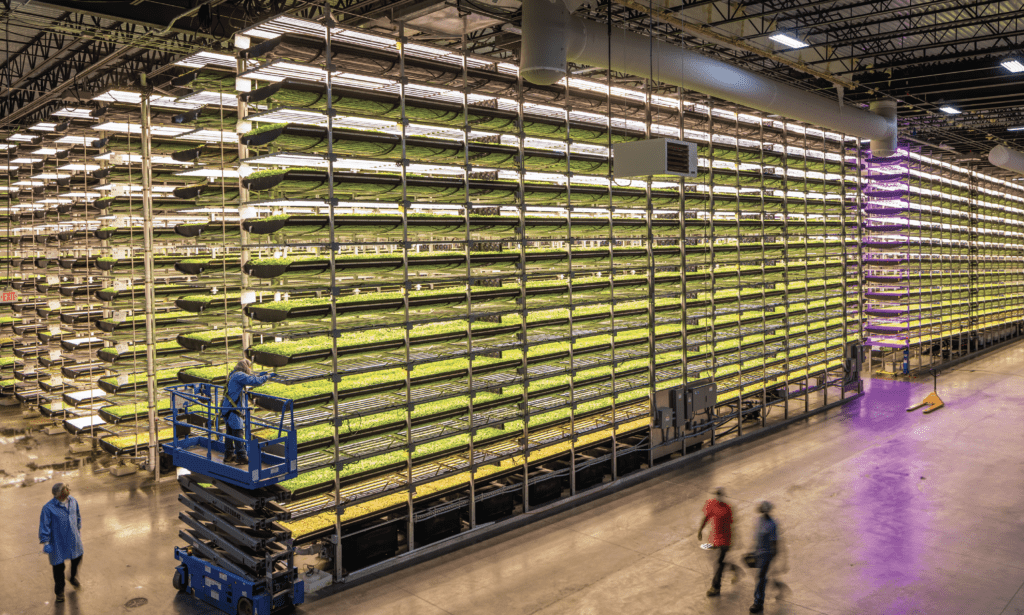How will we feed everyone when there’s only so much land? Consider a similar situation: How will we house all these people when there’s only so much space? Build higher. We built apartment buildings. Or in the case of farming, stack farms on farms by growing vertically. Vertical stacks of hydroponic farms are catching on for things like leafy greens and things like blueberries and strawberries don’t lots of vertical space like corn, hops, and sunflowers. And yet, there’s a business in hops, already. The limits to how much can be grown become infrastructure rather than nature. Seasons don’t matter as much. Soil depletion isn’t an issue when there’s no soil. Pests and weeds become smaller issues, or at least don’t require air-spraying herbicides and insecticides. The lighting is more expensive, but is also more controllable. The image isn’t as quaint, but in places where quantity is the main measure, that’s less of an issue. From the food production perspective;
“…the company averages 26 full-cycle crop turns of its leafy greens a year, and 90 turns of its microgreens vegetables.” – Morning Brew
From the business perspective;
“By 2026, vertical farming could become a ~$20 billion market worldwide, according to BIS Research. For context, US farmers accounted for $136 billion, or 0.6%, of US GDP in 2019, per the USDA.” – Morning Brew
That’s more than 10% of the market. At one time, 10% sounded small for solar power and electric vehicles. Vertical food. One trivial warning, there is an abundance of puns about the business growing.


Pingback: Data That Matters February 2022 | Pretending Not To Panic